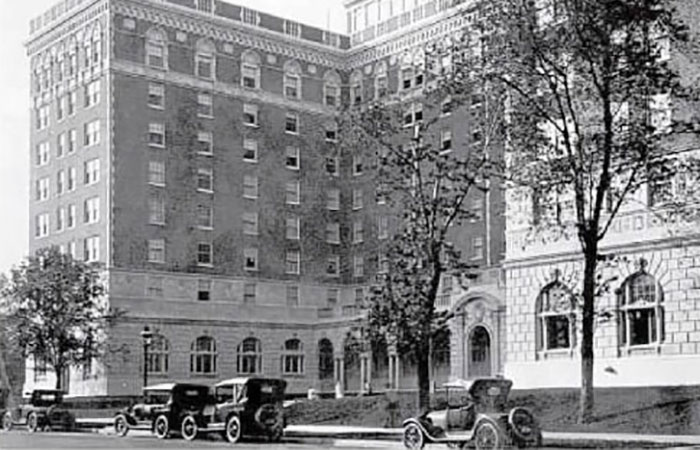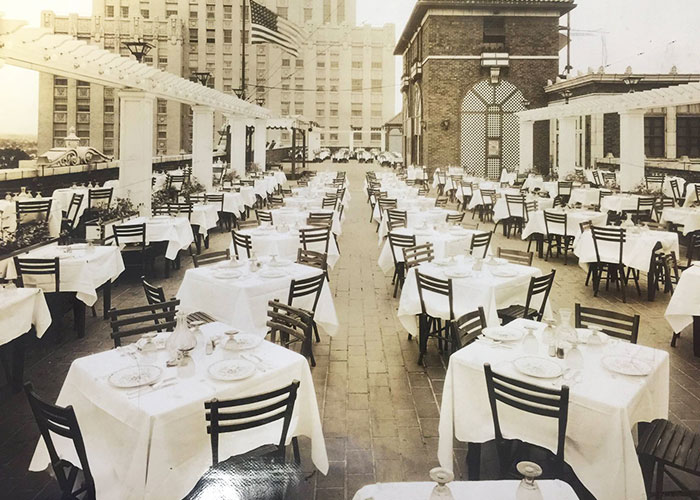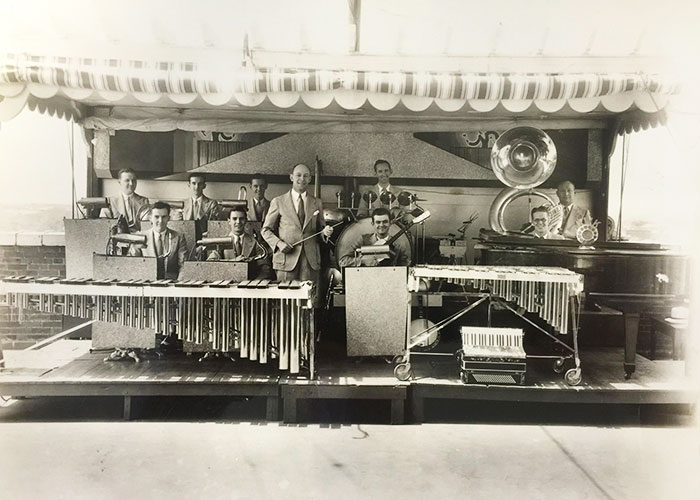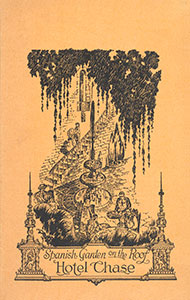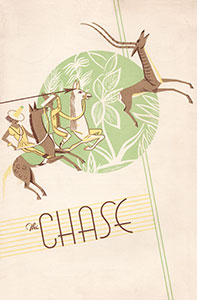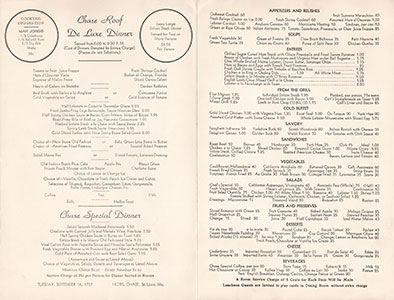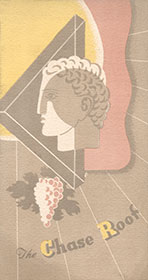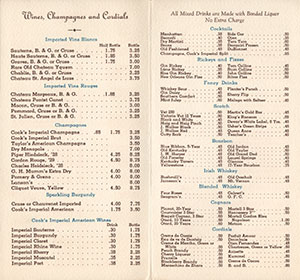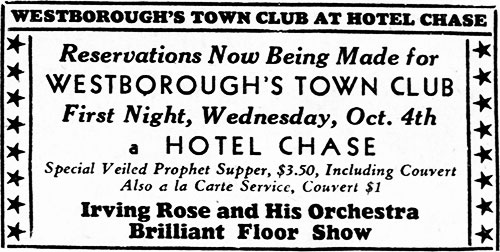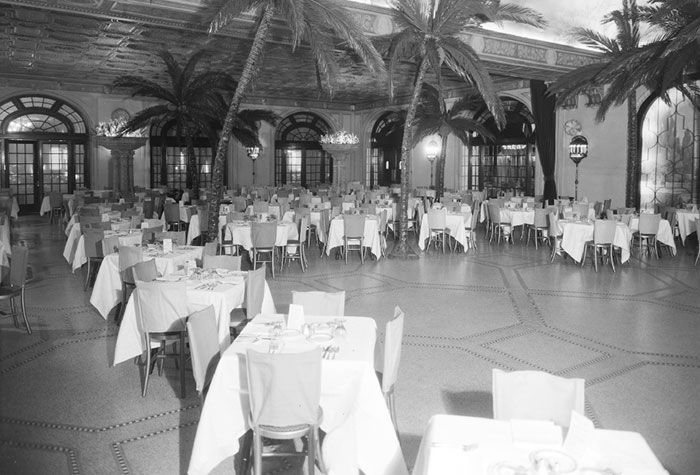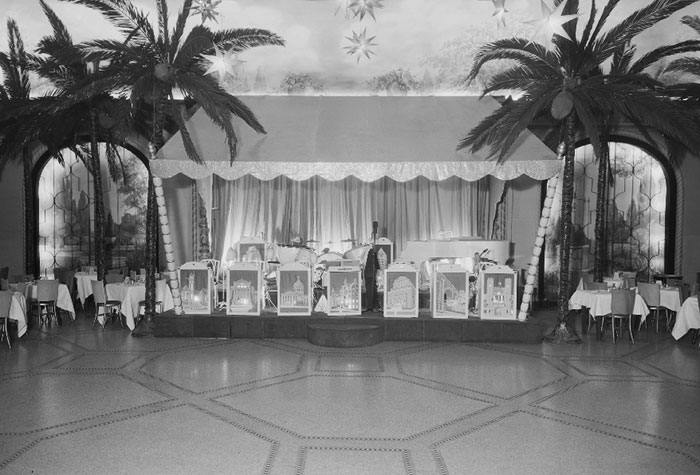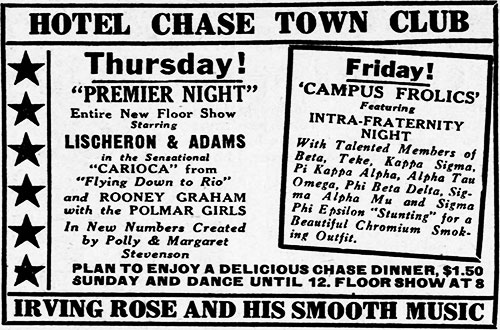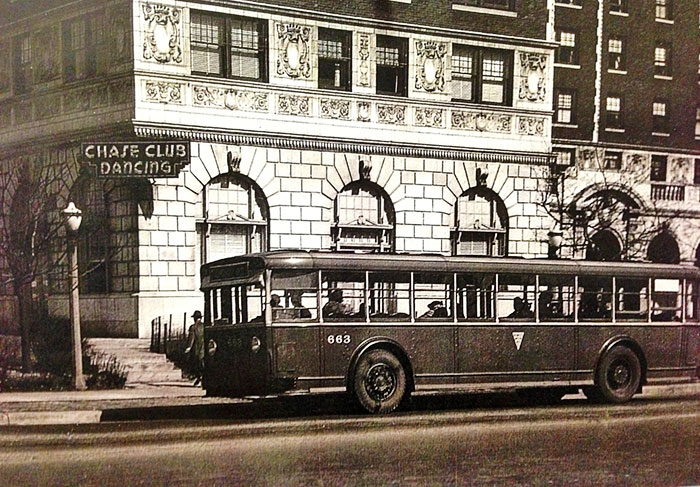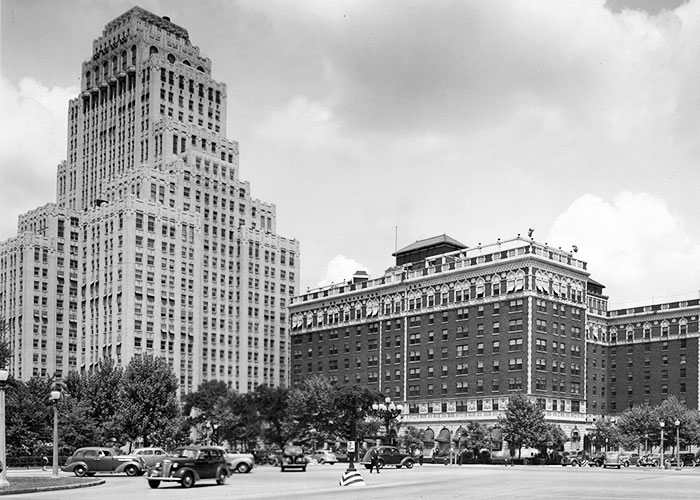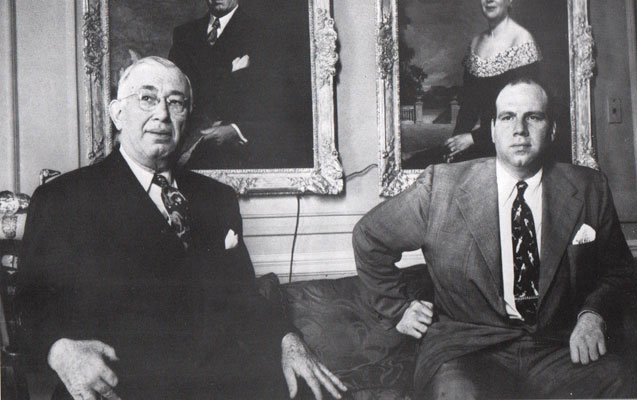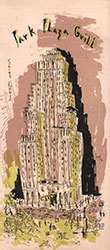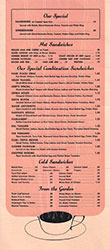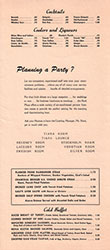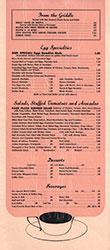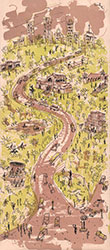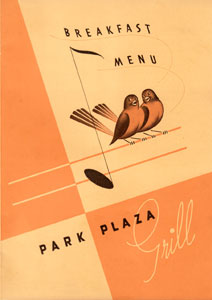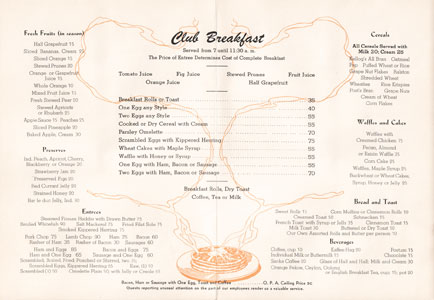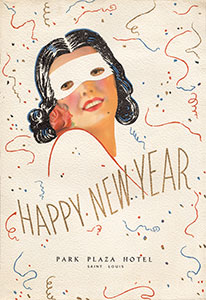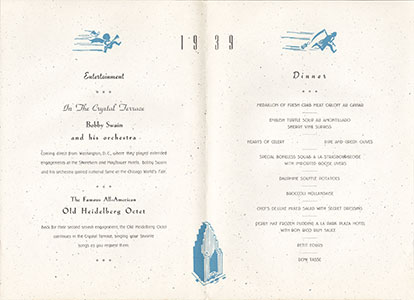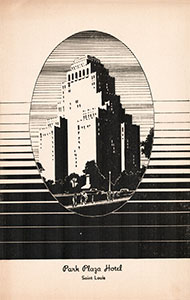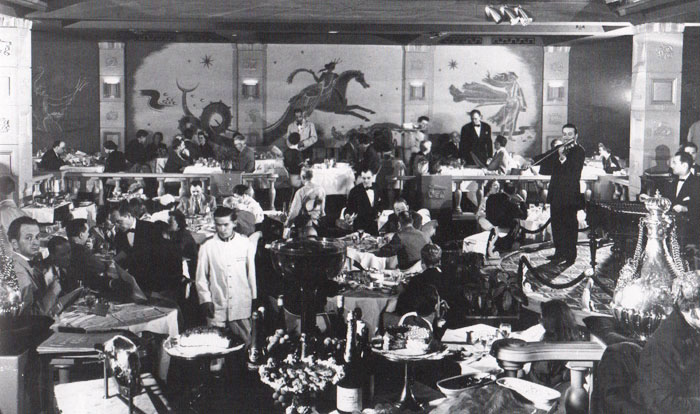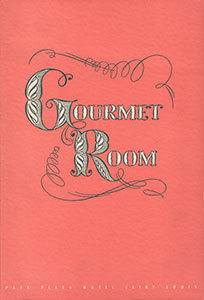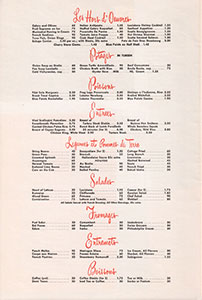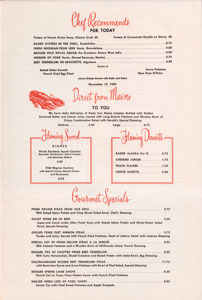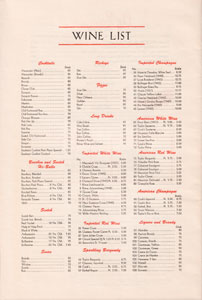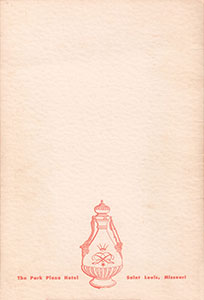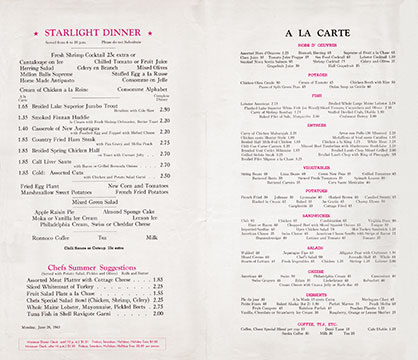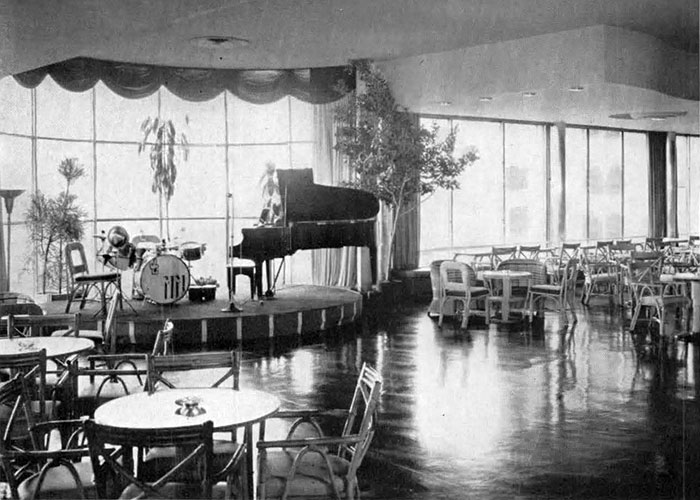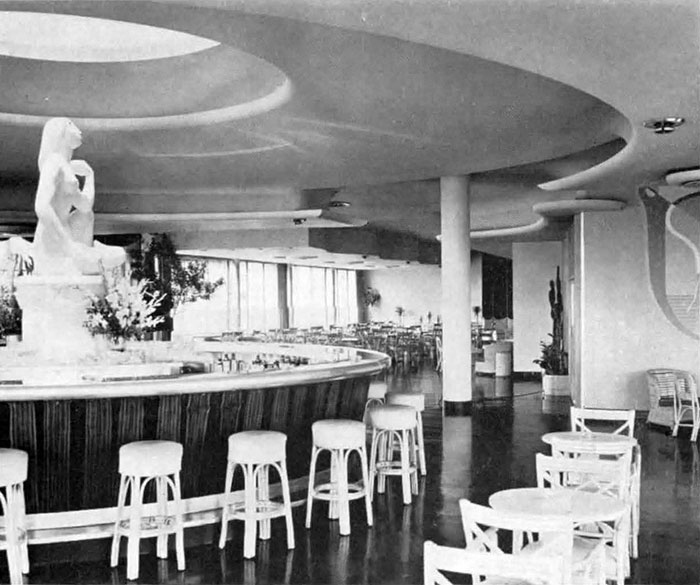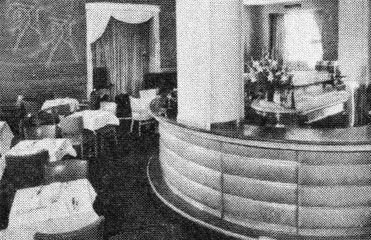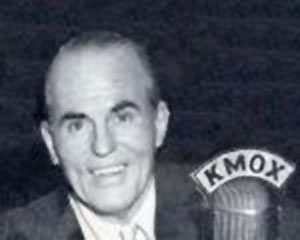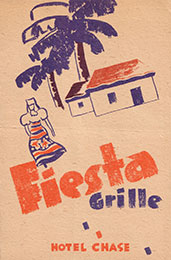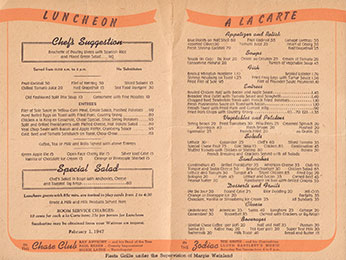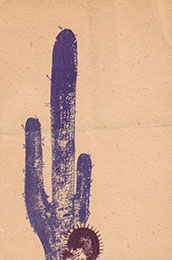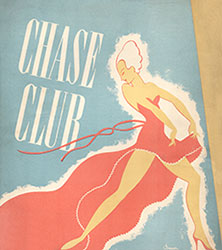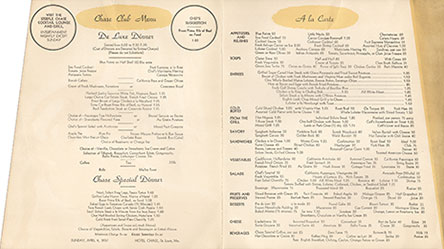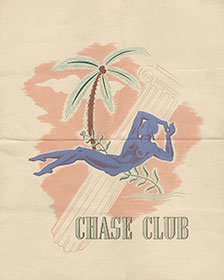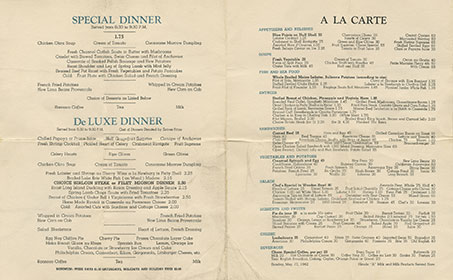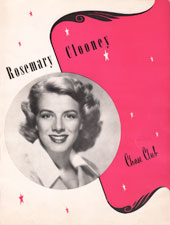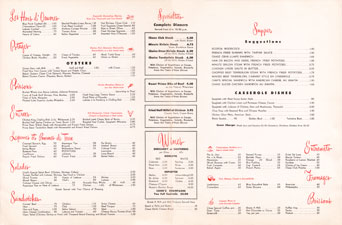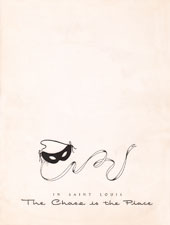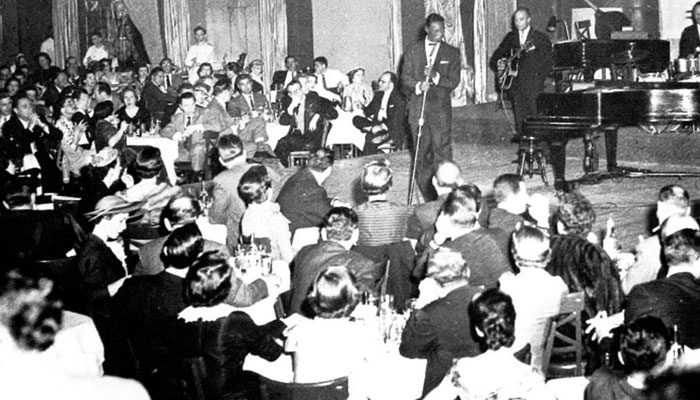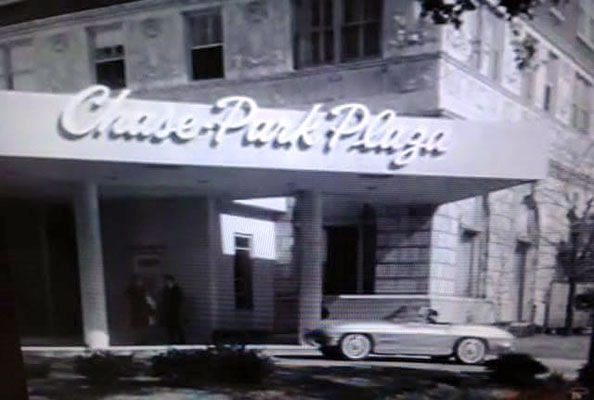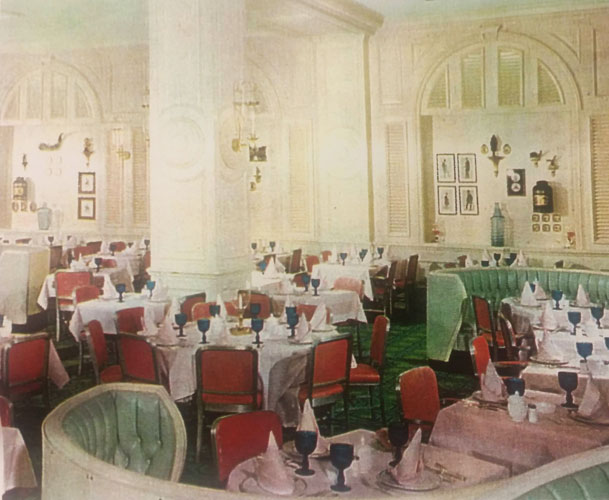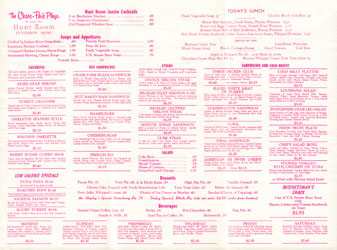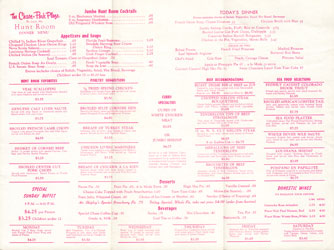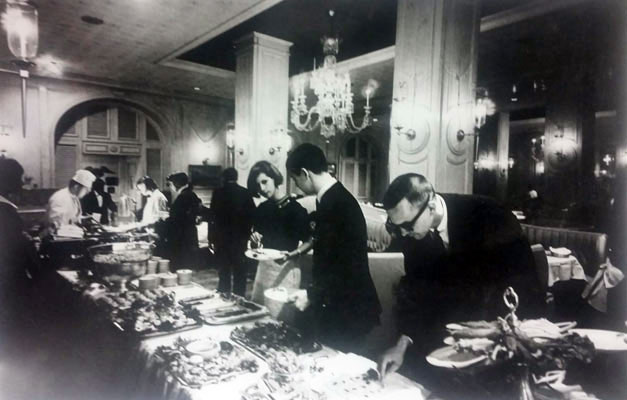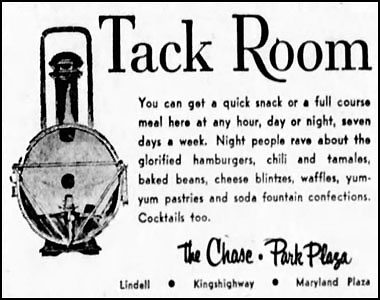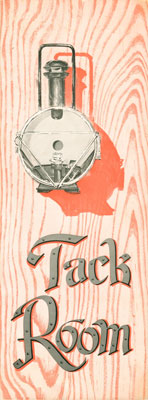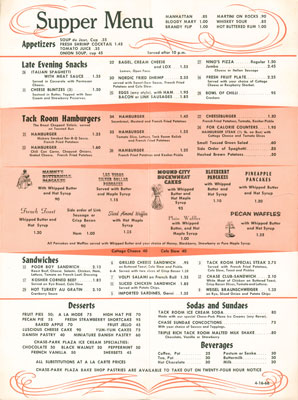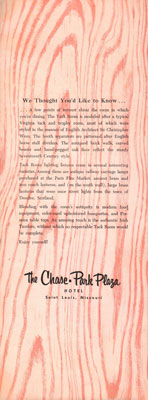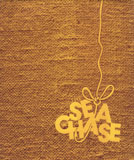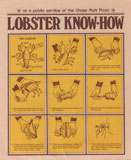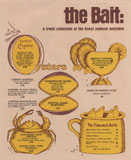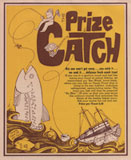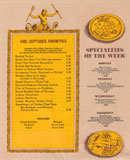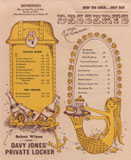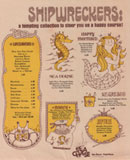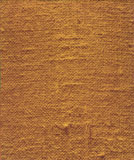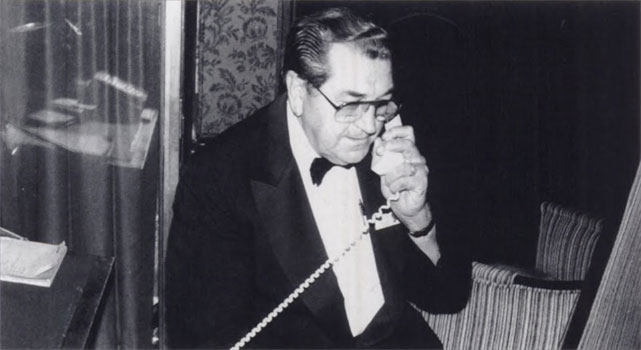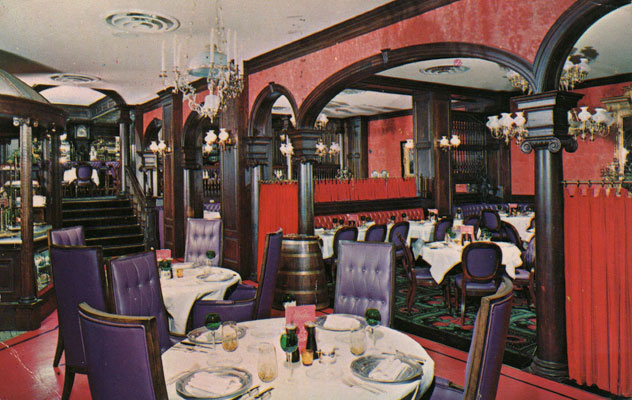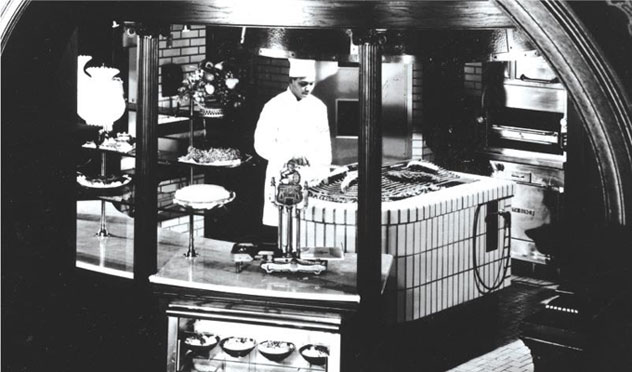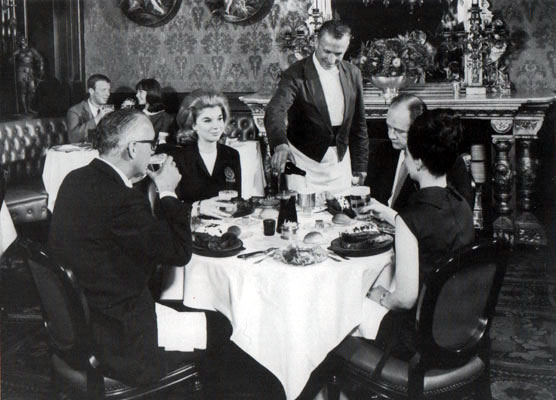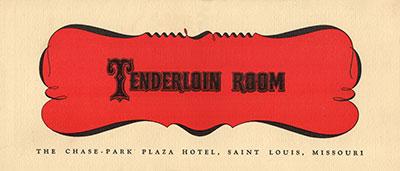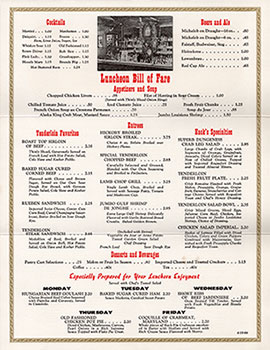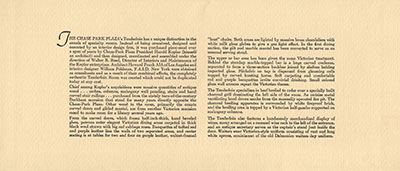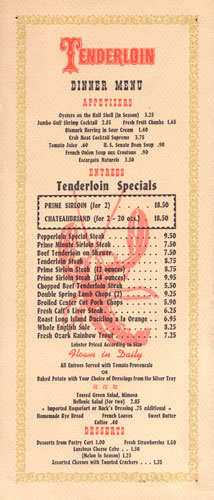|
The Chase Park Plaza
In 1921, a parcel of land at the corner of Lindell and Kingshighway was purchased by a group of businessmen,
headed by attorney Chase Ulman. They planned to build a
hotel-apartment complex on the property to take advantage of those
individuals wishing to stay or dwell in the Central
West End. In the short span of nine months, the Hotel Chase and
Chase Apartments were constructed.
The Hotel Chase had its public opening on September 29, 1922; Paul Whiteman’s orchestra came from New York to play at a formal dinner dance. The nine-story hotel contained 500 guest rooms and multiple dining areas, including the Palm Room, which was open for the winter season, and the Roof Garden, open for the summer season. The Palm Room was located directly behind the ground floor main lounge. There was a dance floor, with nightly dancing to a featured orchestra.
The Palm Room got off to an inauspicious start.
On New Year’s Eve 1922, partiers jammed the spacious venue for
dinner, dancing and midnight noisemaking. However, as it was the
second New Year’s Eve under Prohibition, no alcohol was served. At
each table, a card warned: "Patrons are earnestly requested not to
violate the law." But by 1922, revelers knew how to slip a flask
into a public place.
When the weather turned warm, the Palm Room closed and activities moved to the Roof Garden.
In the summer of 1936, the Hotel Chase received complaints from tenants in a neighboring building that the music and floor show of its Roof Garden was keeping them awake a night. The City Excise Commissioner threatened revocation or suspension of the hotel's liquor license. Whether for this reason or, more likely, because summer roof gardens were being displaced by air conditioned venues, in 1940 the Chase Roof was enclosed and became the Starlight Roof. * * * * * In 1927, the Westwood Country Club, which had been located in Glendale at the intersection of Lockwood and Berry for twenty-five years, relocated to grounds at Conway and Ballas. The Glendale location was sold to a syndicate headed by Walter L. Pfeffer and converted to a semipublic golf club under the name Westborough Country Club.
In the summer of 1933, the Westborough Country
Club opened an outdoor venue on its grounds called the Terrace
Gardens, open to the public for dining and dancing.
The Terrace Gardens provided first class entertainment, attracted large crowds and proved a financial success. It was so successful that the Westborough Country Club contracted with the Hotel Chase to use their Palm Room as a complimentary winter venue for their entertainers, with a complimentary name – the Westborough Town Club.
The Westborough Town Club attracted country customers and town customers alike, and was an immediate success. However, on November 26, 1933, the Westborough Country Club in Glendale was destroyed by fire. The loss was estimated at $125,000. In January of 1934, plans to rebuild the country club were announced. It was also announced that, "Westborough probably will not open any of its facilities, day or night, to the public this year. Supper dancing will be for club members only." Since a members only venue in a public hotel was problematic, Westborough sold its Town Club to the Hotel Chase.
The Hotel Chase Town Club would move out of the
Palm Room to a new space across the hall in November of 1935. By
then, the "Town" moniker had be dropped.
* * * * * Sam Koplar was born in St. Louis on July 4, 1888 in a small house at the corner of Broadway and Tyler. He was forced to drop out of college after one year; his family could not afford the tuition. After unsuccessfully trying to find work washing cars for auto dealers, he stumbled into the construction business, where he made his fortune. In 1929, Koplar acquired a lot near the corner of Lindell and Kingshighway, adjacent to the Hotel Chase, where he built a hotel modeled after the Savoy Plaza in New York City, with oversized windows, velvet draperies and divans in the lobby, uniformed bellhops and fine dining. He named his hotel the Park Plaza.
Koplar would lose the 28-story Park Plaza to
foreclosure during the Depression, but he would reacquire it in 1944. And
by 1946, he had acquired majority control of the Chase Hotel.
The Park Plaza offered fine dining, as well as more casual venues. The Empire Room opened by December of 1930.
In April of 1931, the Park Plaza announced the opening of the Terrace Restaurant.
The Park Plaza drug store, with a full soda fountain, made incomparable malts and milkshakes, as well as tasty tuna salad sandwiches. The Park Plaza Grill served breakfast, lunch and dinner, specializing in "fancy, oversized ice cream sodas and luscious sundees" and "mouth watering sandwiches in unusual combinations." There was more sophisticated entertainment and fine dining in the Crystal Terrace, an upscale dining room in the Park Plaza's lower level which opened on November 17, 1934.
On March 24, 1951, the Crystal Terrace became the Gourmet Room.
On December 5, 1940, the Chase Hotel opened its new Starlight Roof and Zodiac Cocktail Lounge, a glass-enclosed supper room and bar, which replaced the open-air Roof Garden. A blue neon "CHASE" sign was installed atop the Zodiac Lounge's circular orchestra bay.
The
Starlight Roof, with a capacity for 1100 people, became the hotel's
main dining room, with dancing and entertainment. Decorated in rose
and gray, it afforded a panoramic view of Forest Park and the west
end of the city. An open terrace retained some of the charm of the
old Chase Roof. Murals by Chicago artist Eric Mose were at the east
end of the room.
The Zodiac Lounge had its own dance floor, with
a circular orchestra bay. It terminated in a circular glass bar at
the south end, 62 feet in circumference, with the 12 signs of the
Zodiac sandblasted into its surface. In the center, a silver statue
of a girl pointed to the sky. At the flick of a switch, a dome above
the silver figure slid back, revealing the star-studded sky.
There were other dining venues at the Chase, including the Fiesta Grille, which specialized in cheese blintzes, and the Steeplechase Room, where Harry Fender broadcast live on KMOX radio from 1954 until the mid 1970s.
For 20 years, Fender entertained late-night
radio listeners with a veritable who's who of show business – Frank
Sinatra, Sophie Tucker, Jimmy Durante, Nat King Cole, Jack Benny,
Bob Hope, Mary Martin, Pearl Bailey, Ethel Merman, Rodgers and
Hammerstein and on and on.
* * * * *
The premier venue at the Chase was the first
floor Chase Club, which had moved from the Palm Room to a windowless
interior space on the north side of the lobby in November of 1935.
It would provided dining and entertainment for the next four
decades.
When the Chase Club opened for the fall season in
September of 1939 it had been completely redecorated. It boasted a blue plush
ceiling, modernistic decorations and a larger dance floor,
surrounded by tables where fine food was served.
The real attraction at the Chase Club was the entertainment. Hack Ulrich, who joined the Chase Hotel staff in 1936 as a bus boy, was the Chase Club's maitre d' for many years until he took the same position at the hotel's Tenderloin Room when it opened in 1962.
By the 1950s, the
Chase Club had a national reputation; it was known as one of the
leading nightclubs in America. The greatest stars in the country
came to St. Louis to appear at the club.
The Chase Club continued to book events throughout the 1960s and into the early 1970s. The list of entertainers appearing at the club in 1964 included Eddie Albert, Sophie Tucker, Robert Goulet, Milton Berle, Vikki Carr, Kay Stevens and Frank Sinatra, Jr. After that, bookings became more infrequent, with performers replaced by fashion shows, banquets and Persian rug sales. In February of 1972, Harold Koplar announced he was closing the Chase Club, explaining the hotel would emphasize food rather than entertainment. The space was converted into two restaurants – the Sea Chase and the Hostaria dell 'Orso. * * * * * On October 30, 1960, the following article appeared in the St. Louis Post-Dispatch.
* * * * *
The Hunt Room opened in 1962. It was the first
restaurant in St. Louis to serve Sunday brunch. The Hunt Room was styled after a gracious
dining room in old Williamsburg, with a high ceiling and bleached
pine walls. There were displays of antiques used during the
Williamsburg period, including hand-blown glass water carriers, a
tea canister from China, hunting horns, pictures taken from
magazines published in that period and boots. Twin chandeliers of
Waterford crystal hung at each end of the dining room.
The popular Tack Room was added at the north end of the Chase lobby. The restaurant was modeled after a typical Virginia tack and trophy room, most of which were styled in the manner of English architect Sir Christopher Wren. A tack or trophy room was an area next to the stable where gentlemen met after a hunt to rest and talk about the events of the day. The booth separators were patterned after English horse stall dividers. The antique brick walls, curved beams and hand-pegged oak floor reflected the sturdy seventeenth century style. The lighting fixtures were antique railway carriage lamps purchase at the Paris Flea Market, ancient brass lanterns and iron coach lanterns, and large brass lanterns that were once street lights from the town of Dundee, Scotland. Blending with the room's antiquity was modern food equipment, color-cued upholstered banquettes and Formica table tops.
The twenty-four hour "coffee shop" served an array of good food at reasonable prices, and offered table, booth and counter service. It was the place to see celebrities and business bigwigs while you enjoyed a chili-cheeseburger. In December of 1972, Harold Koplar opened The Sea Chase at the site of the shuttered Chase Club on the lobby level. He spared no expense to make the restaurant look authentic. There were various sea-oriented wall hangings, wrought iron gates and railings, and a ten-foot model of the Sea Witch, an ocean tugboat used in the film "The Wreck of the Mary Deare." While the Sea Chase lasted over a decade, it never received favorable reviews. On Mach 28, 1962, Harold Koplar opened the Tenderloin Room on the ground floor of the Park Plaza and put Hack Ulrich in charge. Henry "Hack" Ulrich was a St. Louis legend. He started working at the Chase as a busboy in 1936, right out of high school. He was the maître d' at the Chase Club. When Koplar planned a new dining room for the hotel, there was never any doubt who would be its maître d'.
If you needed a table, you called Hack. He knew
the name of every individual who came once to the Tenderloin Room,
and if they came twice, as most did, he knew the names of their
family members, banker and barber. In 1982, the restaurant was renamed "Hack's
Tenderloin Room" to commemorate his many years of service to the
Chase Hotel and his standing as a St. Louis institution.
The Tenderloin Room was elegant and old-fashioned, with carved panels and woodwork that Koplar had bought from a demolished mansion on Vandeventer Place. On the left side of the room was a specially built charcoal grill, with an outsized metal ventilating hood, where food was cooked and then served within seconds.
"We bought nothing
but the best prime meats, and it was aged good, and everything made
to order," said Ulrich. "We took it off that grill and put it on a
plate and gave it to you. Everything was just perfect, hot."
Mainstays of the Tenderloin Room menu were its U.S. Senate Bean Soup, served at both lunch and dinner, and its popular Hellenic Salad, which was almost a meal in itself. But the Tenderloin Room's specialty was beef – particularly Hack’s trademark Pepperloin Steak with its piquant mustard sauce.
For dessert, many chose the sumptuously
rich cheesecake, conjured up by the Chase’s pastry department under
chef Alfred Fink. "You know, we made the greatest cheesecake in the
world, unbelievable," said Ulrich. "If I gave you a piece of that
cheesecake, I’d pay you if you could eat it in one sitting."
In 1968, the Tenderloin Room
was almost totally destroyed by fire. Undaunted, Hack and
his staff moved the entire operation to the lower level of the Park
Plaza and opened the same night of the fire, ready for business as
usual. When the Tenderloin Room reopened in 1970, it was like
stepping backward into time, only better; the room changed only
slightly from the original design.
In January of 1986, Hack Ulrich retired after 50 years at the Chase and Harold Haynes, who had been Hack's second in command at the Tenderloin Room for 17 years, took over. But Haynes only lasted until mid-year, when he departed to join the ranks of Anheuser-Busch.
On September 22, 1989, the Chase Hotel, which
had been sold by the Koplars in 1981, closed its doors. Management
said the closing would not affect the adjoining Park Plaza, which
had been converted to apartments some years earlier, or the
Tenderloin Room restaurant on its ground floor. On that last evening, Hack Ulrich sat in one of the restaurant's burgundy wing-backed chairs, sipping coffee. Glancing at a sheet of paper, he read off names of presidents, actors and athletes who had frequented the restaurant.
Copyright © 2025
LostTables.com |
||||||||||||||||||||||||||||||||||||||||||||||||||||||||||||||||||||||||||||||||||||


